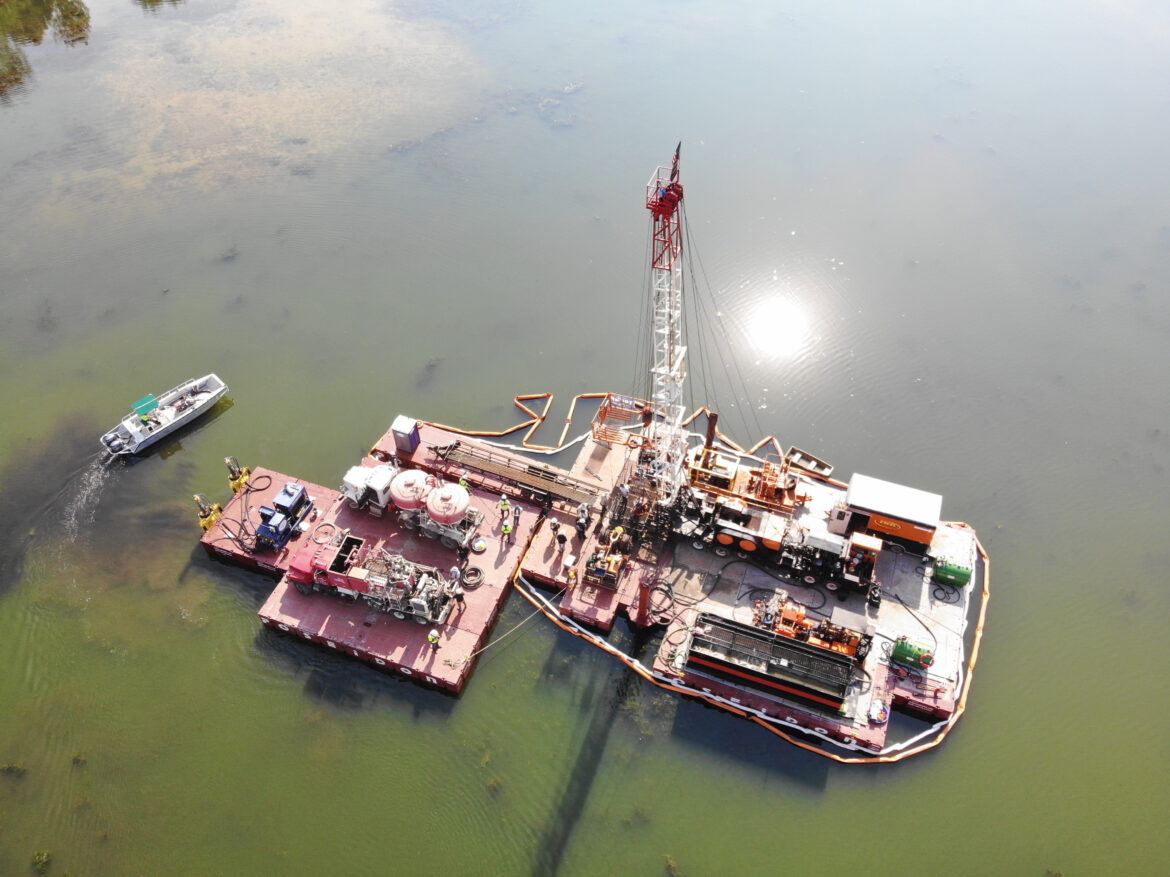
Workers operate a floating rig to plug an orphan oil well in Ottawa County. Credit: Department of Environment, Great Lakes and Energy
By Donté Smith
Capital News Service
Michigan’s oil industry may not be front and center, but it remains active with over 9,300 wells across the state.
The U.S. Energy Information Administration ranks Michigan 18th in the nation in crude oil production.
In June 2024, Michigan wells produced 211,000 barrels of crude oil — around 8.8 million gallons, the agency said. Otsego County leads the state in production, followed closely by Jackson, Kalkaska and Manistee counties.
However, there’s a growing environmental concern linked to the industry: Michigan has about 230 orphan wells abandoned by their original operators or owners without being properly plugged.
That leaves taxpayers on the hook financially and logistically for plugging them.
Orphan wells pose significant environmental and safety hazards, experts say. Without proper plugging, they can contaminate surrounding water sources and leak harmful gasses like methane, potentially contributing to climate change.
Scientists with the National Oceanic and Atmospheric Administration say that the concentration of methane in the atmosphere has more than doubled in the past 200 years, and they estimate that the increase is responsible for almost 30% of climate warming since the Industrial Revolution.
Most of Michigan’s orphan wells are scattered across the Lower Peninsula, and the largest number are in Charlevoix, St. Clair, Benzie, Gratiot and Manistee counties.
Addressing the situation falls to the state Department of Environment, Great Lakes and Energy, which runs the state’s orphan well program.
Jim Armbruster, who manages the program, explained how the process of plugging orphan wells has progressed in recent years, thanks in part to federal funding from the Bipartisan Infrastructure Law.
“Most plugging projects are similar, involving a mix of wells and their associated facilities, where fluids would be stored pending sale or disposal,” Armbruster said.
The department has received two federal grants for orphan well management.
The first $25 million allowed the state to plug hundreds of wells in a year. The second, $5.8 million, funded a project in Ottawa County where two wells in a gravel pit lake near Jenison were sealed using barges to float the plugging rig and materials, he said.
That project followed a report from a concerned kayaker who observed suspected oil on the water and shoreline of the Ottawa County lake in April of last year.
The presence of oil affected 300 feet of shoreline and was traced to abandoned wells impacted by floodwaters, leading to their addition to the state’s plugging list.
However, Armbruster said progress on plugging projects has been delayed due to federal requirements.
Despite 73 orphan wells being closed in August and 54 in September of last year, only 13 have been closed so far in 2024.

Michigan orphan well closures by month from April 2023 through July 2024: Source: Department of Environment, Great Lakes and Energy
“The U.S. Department of the Interior won’t allow states to spend grant money on plugging projects until they get approval on the National Historic Preservation Act and Endangered Species Act requirements,” he said.
The state environmental department is working to hire an archaeologist and a biologist to complete these requirements, which will “pave the way” for Michigan to access more federal funding, Armbruster said.
DNR officials remain committed to reducing the number of orphan wells in Michigan, he said.
Once federal approvals are secured, the department anticipates resuming efforts to plug those wells, he said.
